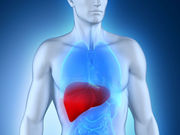Development of T2DM further increases risk for severe liver disease, regardless of BMI
WEDNESDAY, March 22, 2017 (HealthDay News) — High body mass index (BMI) in late adolescence is associated with future severe liver disease in males, with the risk further increased with type 2 diabetes mellitus (T2DM), according to a study published online March 20 in Gut.
Hannes Hagström, M.D., Ph.D., from Karolinska University Hospital in Stockholm, and colleagues used register data for more than 1.2 million Swedish men enlisted for conscription to examine the correlation between BMI and severe liver disease. The authors examined the adjusted hazard ratios for future inpatient care and mortality in severe liver disease and incidence of hepatocellular carcinoma (HCC) across BMI categories, with a reference BMI of 18.5 to 22.5 kg/m².
The researchers identified 5,281 cases of severe liver disease, including 251 cases of HCC, during a follow-up of more than 34 million person-years. Overweight and obese men had increased risk of severe liver disease (hazard ratios, 1.49 and 2.17, respectively). Across all BMI categories, development of T2DM further increased the risk for severe liver disease; the risk of severe liver disease was higher for men with obesity and T2DM (hazard ratio, 3.28) than for men with obesity without T2DM (hazard ratio, 1.72).
“A high BMI in late adolescent men was associated with an increased risk of future severe liver disease, including HCC,” the authors write. “Development of T2DM during follow-up was associated with a further increased risk of severe liver disease, independent of baseline BMI.”
Copyright © 2017 HealthDay. All rights reserved.








